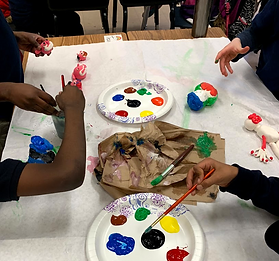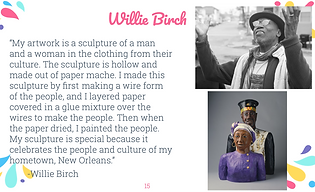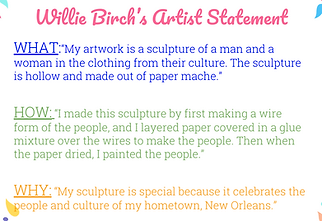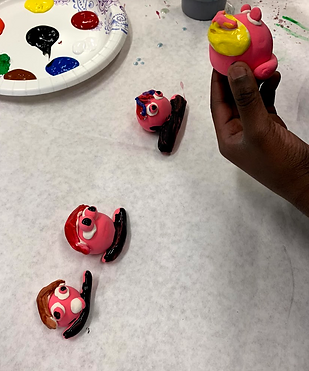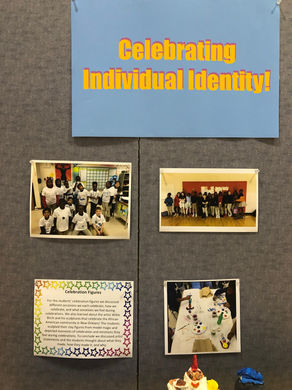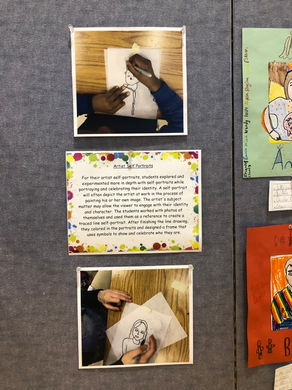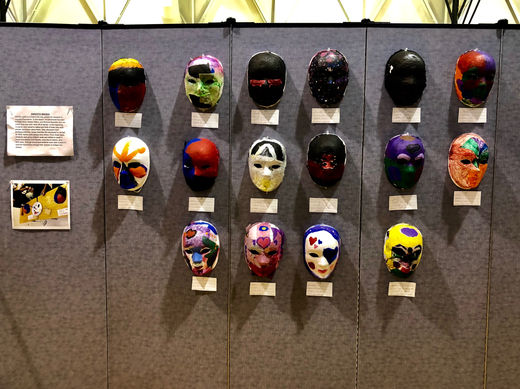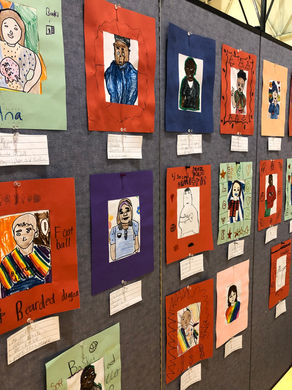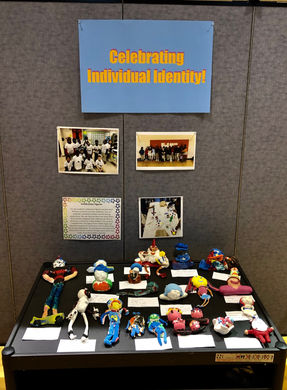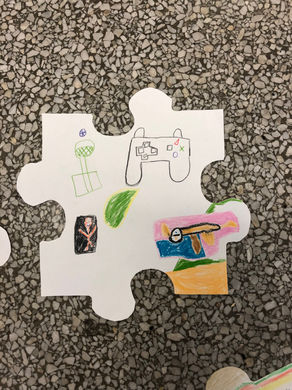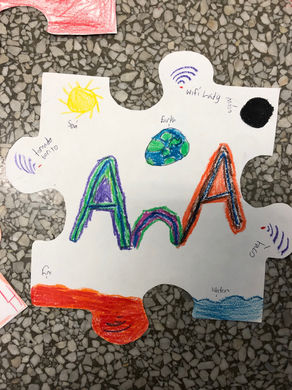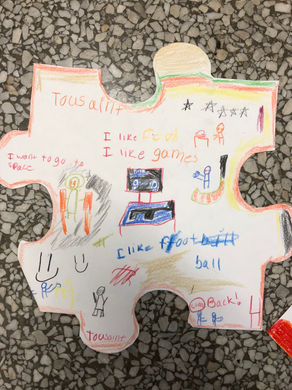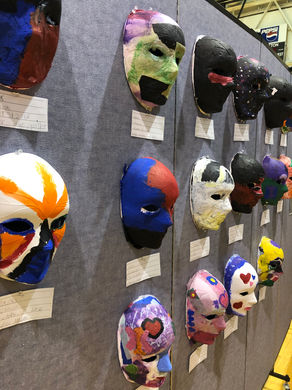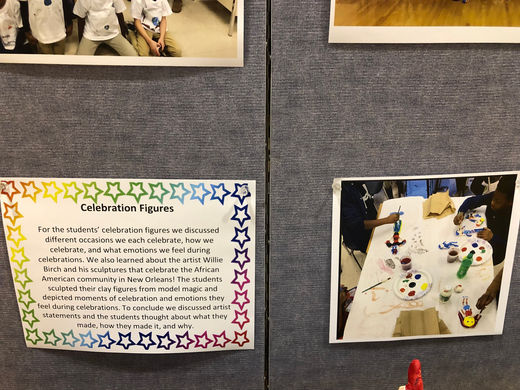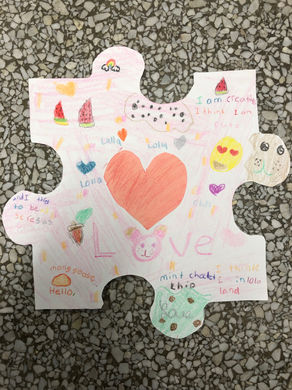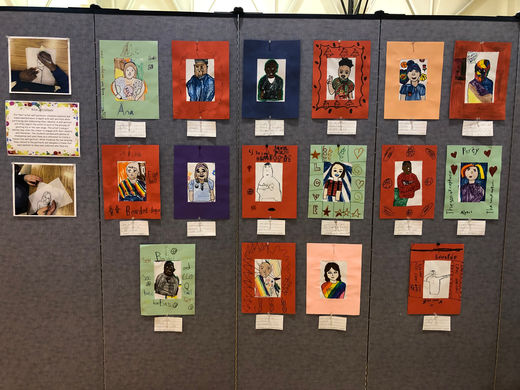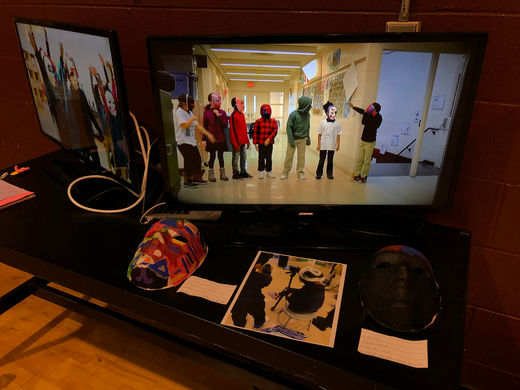Third & Fourth Grade
Masks on Identity
The main idea for the students to understand is identity. We talked about how a person's identity is who they are, and people have different features that make up their identity. For the masks we discussed works by three artists: Willie Birch, Matika Wilbur, and Romare Bearden. Each artists' work centered on depicting people and their identities.
The students would be thinking about their own identity and things that represent them for their mask. We discussed what it could mean to hide your face with the mask that has different features about you on it. We discussed how people could make assumptions about you just by those features, how just some features don't make the whole person, and how these things we hold so close to us only make a portion of who we truly are.
For the construction of the masks, the students were give paper masks on which they first used papier mâché to add color to the plain white masks. Then on day two once they dried the students painted their symbols for their identity on the masks.
For closure we asked the students how their masks depicted a part of their identity.
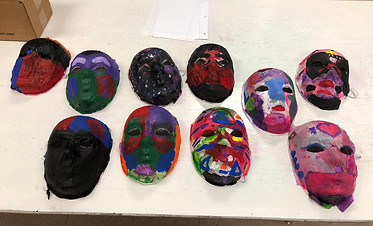
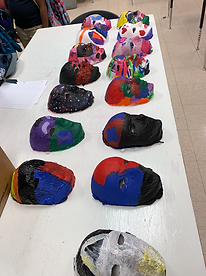
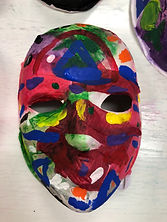
Artist Self-Portraits
The main idea for students to take away from this lesson was self-expression. To use self-expression we continued with our previous topics of identity and symbolism. The main basis for this lesson was the artwork "The Frame" by Frida Kahlo. We described to the students how her artwork was created and how the objects around the image of herself had connections to her culture and identity. The other two artists that we showed for a wider range of self-expression through portraiture were Jean Michel Basquiat, and Mickalene Thomas. Continuing on with the lesson, the words "self-portrait," "symbolism," and "identity" were clearly defined.
For the construction of the self-portraits, pictures were taken of the students the week prior and were printed out in black and white. Each student got their image and tracing paper. First the students traced their image onto the tracing paper with sharpie, then laid their drawing paper above that and traced it one more time. From there the students were able to color in their self-portrait in the ways they feel describe themselves. Then they drew objects they identify with onto their frames and glued their self portrait in the middle of the frame.
For closure on this lesson and our time overall, then students then learned about labeling their artwork. We discussed how labeling your work helps the viewer to know who made the work, when, how, and what the work is. The students then made their own labels for their self-portrait and two other artworks.


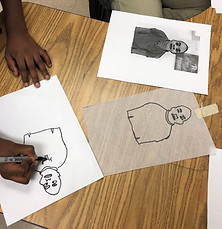
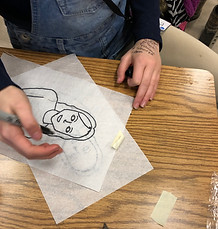
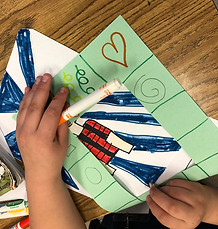
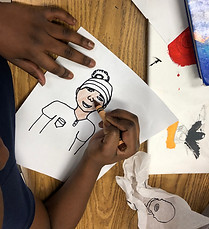
Celebration Figures
For this project our main ideas for the students to learn about were celebration and emotion. With the students we discussed different occasions they celebrate, how they celebration, and how they feel during celebrations. We talked about celebrating your birthday, Christmas, getting a good grade on a test, when your favorite sports team wins, and more. Some things the students mentioned that they do during celebrations is dance, run around, yell, hug, jump up and down, etc. The emotions they feel during celebrations were happy, excited, amazing, energized, etc.
With all of those aspects of celebration in mind, we looked at the artist Willie Birch and his papier mâché sculptures that celebrate African American culture from his hometown of New Orleans. Birch's examples showed the students that celebration does not always have to be about a party, but it could also be just celebrating who you are.
For the creation of their celebration figures, the students were able to make a full body figure, or just from the shoulders up. They were given model magic clay which the kneaded and rolled into their figures. Their figures could be themselves or someone they know, or even a fictional character, the only restriction what that the figure had to be a human because human faces show emotion more clearly. After the students made their forms, they were able to paint them.
For closure we used one of Willie Birch's Sculptures to teach the students about artist statements. The students learned that artist statements are (in their simplest form) "what you made," "how you made it," and "why you made it." After the students finished their sculptures, they wrapped up the lesson my completing their own artist statement about their figure and were able to reflect on what they made.
